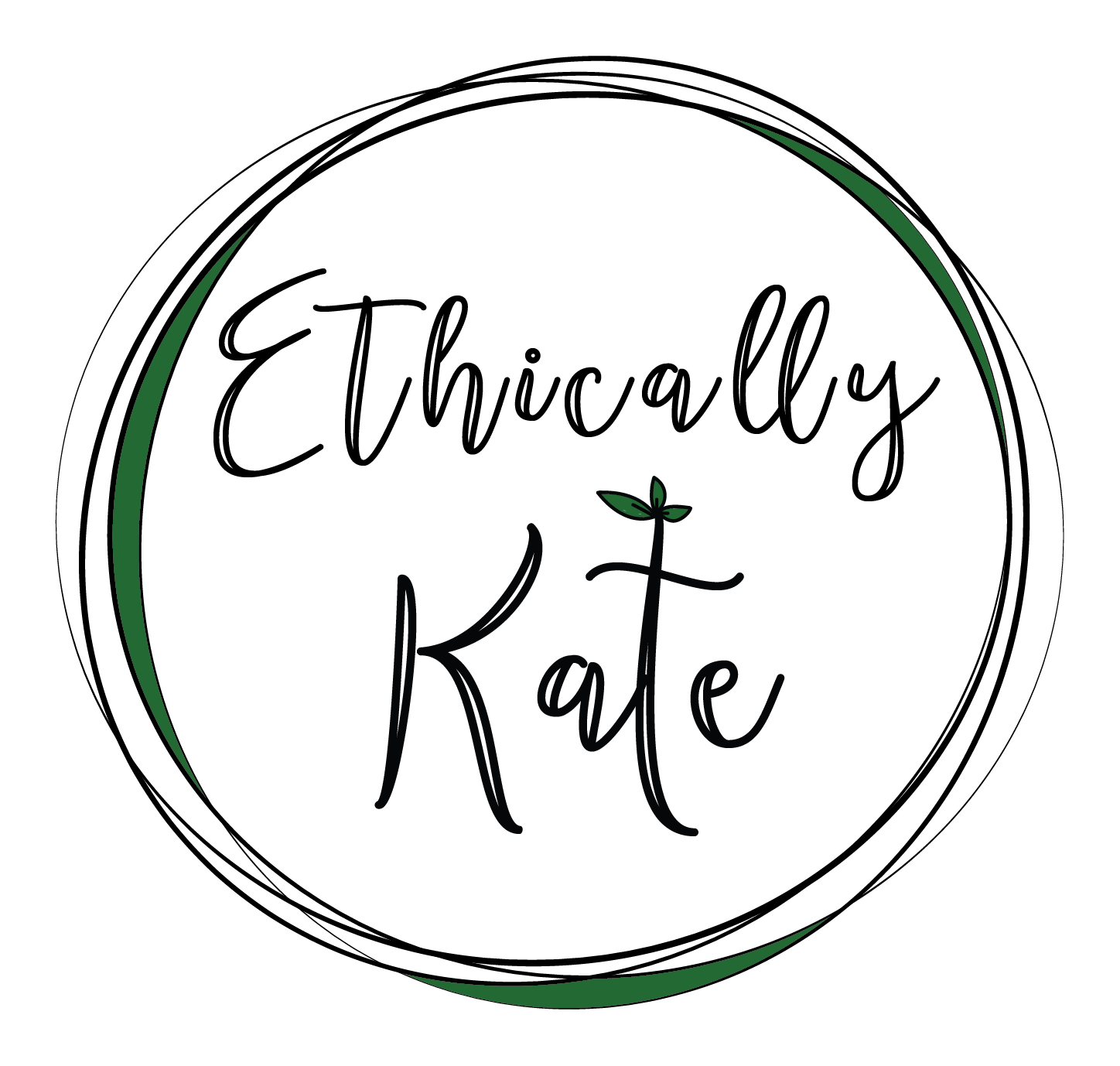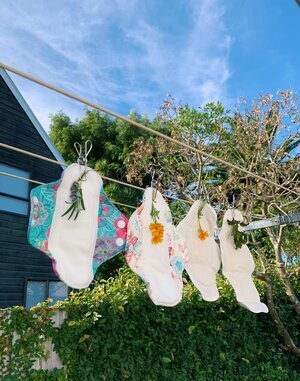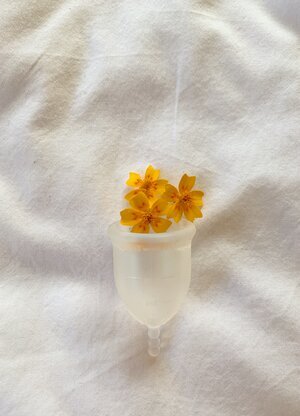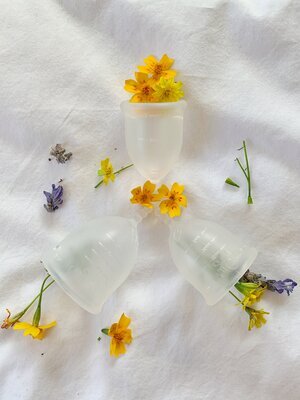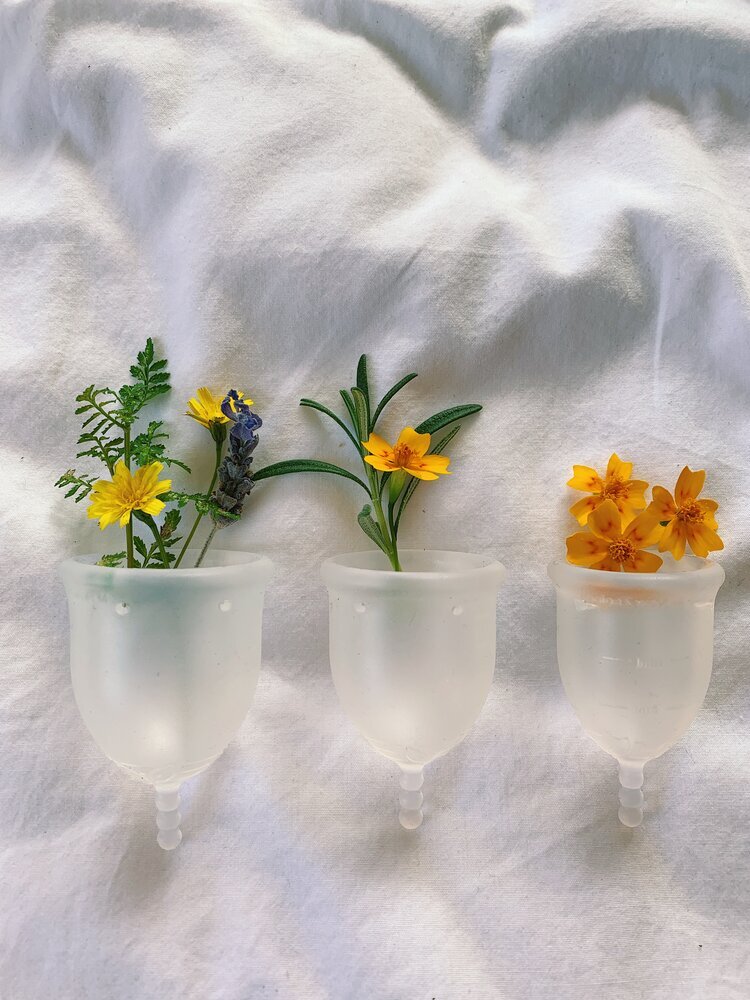Reusable Period Underwear, Pads and Menstrual Cups
I’ve changed A LOT about my life in the last 4 years. I’ve changed my diet to match the foods that I can purchase locally and with low waste, I’ve changed the way I shop for clothes, my transport, how I spend my weekends (usually making food from scratch and visiting the farmers market), and how often I travel overseas (before COVID helped me stop that altogether!). It feels brilliant knowing these new habits ensure my existence has less impact on the earth and people.
But if someone held me down and said “You must go back to your old way of living; you can choose only one new habit to keep!” I would answer: “I’m keeping my reusable menstrual cup.”
My menstrual cup from MyCup saves waste (approximately 150 tampons and hundreds of liners each year), money ($8,900 over my lifetime), and hassle (easier to attend festivals, camping, and stay active). I could never go back to single-use period products.
Since talking about my menstrual cup a heck of a lot, both online and offline, I’ve become increasingly aware that our bodies are so different to each other.
Not every body suits a menstrual cup.
Although menstrual cups are the most environmentally friendly reusable period product (as you’ll soon find out), some people are uncomfortable inserting something into their body, some cannot because of medical reasons, and some people simply prefer other methods.
Over the past few years I’ve tried reusable pads, liners and period underwear too.
If you haven’t yet swapped to a waste free period, I hope the below information will help you decide which reusable period product is for you.
Reusable Pads (and liners)
The concept of a reusable pad is just like a disposable one: pop it on your underwear, use for 2-4 hours, and replace. Accept instead of throwing the pad in the bin (even if your disposable pads are made from organic cotton, they still end up in landfill and do not break down), you can throw your reusable pads in the wash. Personally, I rinse them in cold water instantly after use, and then throw them in my next normal washing load.
There are a variety of reusable pads on the market, each made from different fabrics and in slightly different styles. No matter what though, each reusable pad will have a way to fasten around the gusset of your underwear. The ones I have tried use plastic domes that you can easily press together to fasten, and then pull apart when it’s time to remove and replace the pad.
Reusable pads don’t smell, are really comfortable (far better than plastic pads rubbing against your skin!), and cost between $12 - $30 per pad. Liners, light pads, medium pads, night time pads, ultra long pads… these are accessible, cost affective, and super helpful for younger people who have just begun their ‘monthly flow’ or simply prefer managing their periods with an external product.
REVIEW: I’ve personally tried the Hannah Pad liners. These are thinner, smaller pads that are great for times of the month when you are spotting or have a light flow. Their only fault is that sometimes they slip up if the material of my underwear is too slippery- though now I’ve learnt not to wear those pairs of underwear on days that I am using a Hannah Pad Liner. I’ve noticed cotton underwear it the best for non slip.
UPDATE: MyCup have launched cotton/hemp reusable pads, made in Christchurch. They are beautiful - you can find them here.
Menstrual Cups / Moon Cups
We’re on to my personal favourite! I cannot shut up about menstrual cups. I’ve literally written four blog posts about them over the past four years, and I have more planned.
I promise before I started using one, I was just like you might be right now: I could not comprehend the thought of sticking something like the objects pictured above, up my you-know-what. But it’s worth getting your head around, because the benefits are endless.
Read:
It’s paramount that you get the right cup size. This will save you money, plus ensure you have a leak free menstrual cup experience. MyCup have helpful information around locating your cervix to ensure you pick the right cup (it’s just like measuring your foot before buying shoes!), and you can email them with any questions (hello@mycup.co.nz) - an expert will reply super quick!
Note: It will probably take you a few months to get used to your cup. For me, it took four cycles to properly get used to using one. Persist!
You can find all sorts of menstrual cups here.
REVIEW: I use a MyCup Menstrual Cup Size 1 and have done for years. It’s the best for first time cup users and people who have a low cervix (find out how to discover where your cervix sits here).
The pink cup pictured above is a Ziggy Cup: useful for people who want to continue having sex while on their period. I haven’t used the Ziggy Cup yet, so cannot give you a personal review.
IMPACT: The cup will end up in the rubbish bin at the end of it’s life, but that’s one tiny cup over 10 years. If you consider the tonnes of waste you would have produced every month for 10 years, this impact is incredibly small.
Period Underwear
When I first heard of period underwear, I genuinely blocked the ad from the American company who was trying to sell them to me. I did NOT understand the concept enough to believe that they would stop my jeans from being soaked in blood by the end of the day!
Little did I know: it was legit.
Period underwear is essentially a pair of underwear with a reusable pad built into the gusset. Depending on your flow, you can wear these undies for anywhere between 2 - 8 hours. I personally love wearing them on the last day of my period, when it feels excessive to use my cup, but I don’t want to risk staining my underwear from a few last drops.
REVIEW: I use Love Luna Period Underwear (pictured below, I’m wearing size 10-12 black Love Luna Underwear Bikini Brief) and Modi Bodi. I find both very comfy, just like normal underwear.
One of the reasons I love period underwear, is that you can use them throughout the entire month. This means they’re not something that has to sit redundant while you’re not on your cycle. They are particularly snuggly because of the extra layer of absorbency, so perfect for winter too.
IMPACT: These last approximately 50 washes (cold wash, preferably in delicates bag). They will last for approximately 2 years. Although this is less waste than disposables, period underwear is more wasteful than a menstrual cup.
I believe reusables are the only way forward for period management: for everyone, everywhere. Especially during times of crisis (where finances and accessibility to shops is limited), reusables help people manage their periods with less stress.
I acknowledge that although reusable period products are cheaper long term, they are more expensive up front, and therefore unaccessible for some people who live week to week. However, MyCup are pushing to fight against period poverty in Aotearoa New Zealand and offer a buy-one-give-one scheme to support those who cannot afford to invest in reusables. The Good Fund are also a non-for-profit (co-founded by MyCup) who fully and partially subsidise the cost of reusable period products for those in need.
If you are looking to purchase reusables from MyCup use code ETHICALLYKATE for 10% off site wide, and ETHICALLYKATE30 for 30% off menstrual cups.
Shop MyCup Menstrual Cups or a range of others.
As a rule, I only work with brands I love, use, and can whole heartedly back. I send the brand a large list of questions to answer first, and trial the product properly before saying yes to anything. This is a sponsored blog (I can't pay my electricity bill with free products), but 100% my own words, photos, and opinion.
